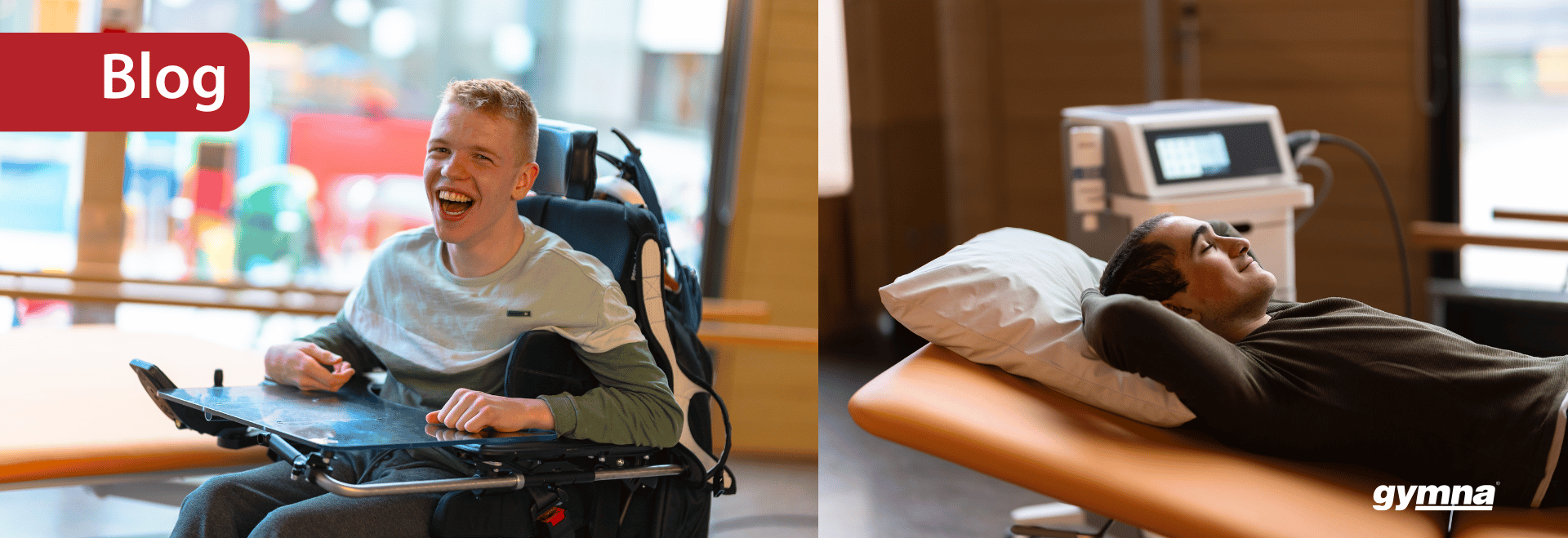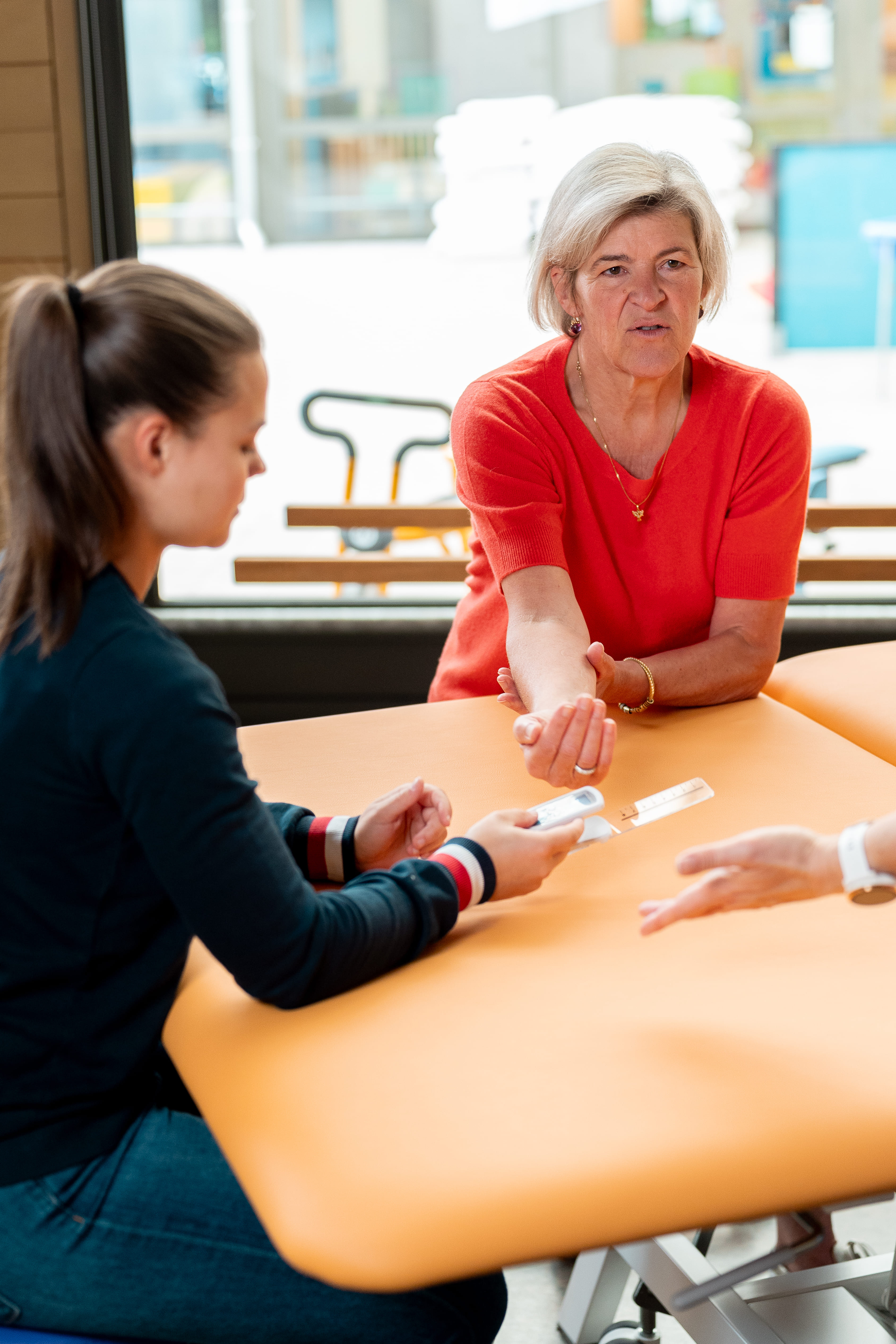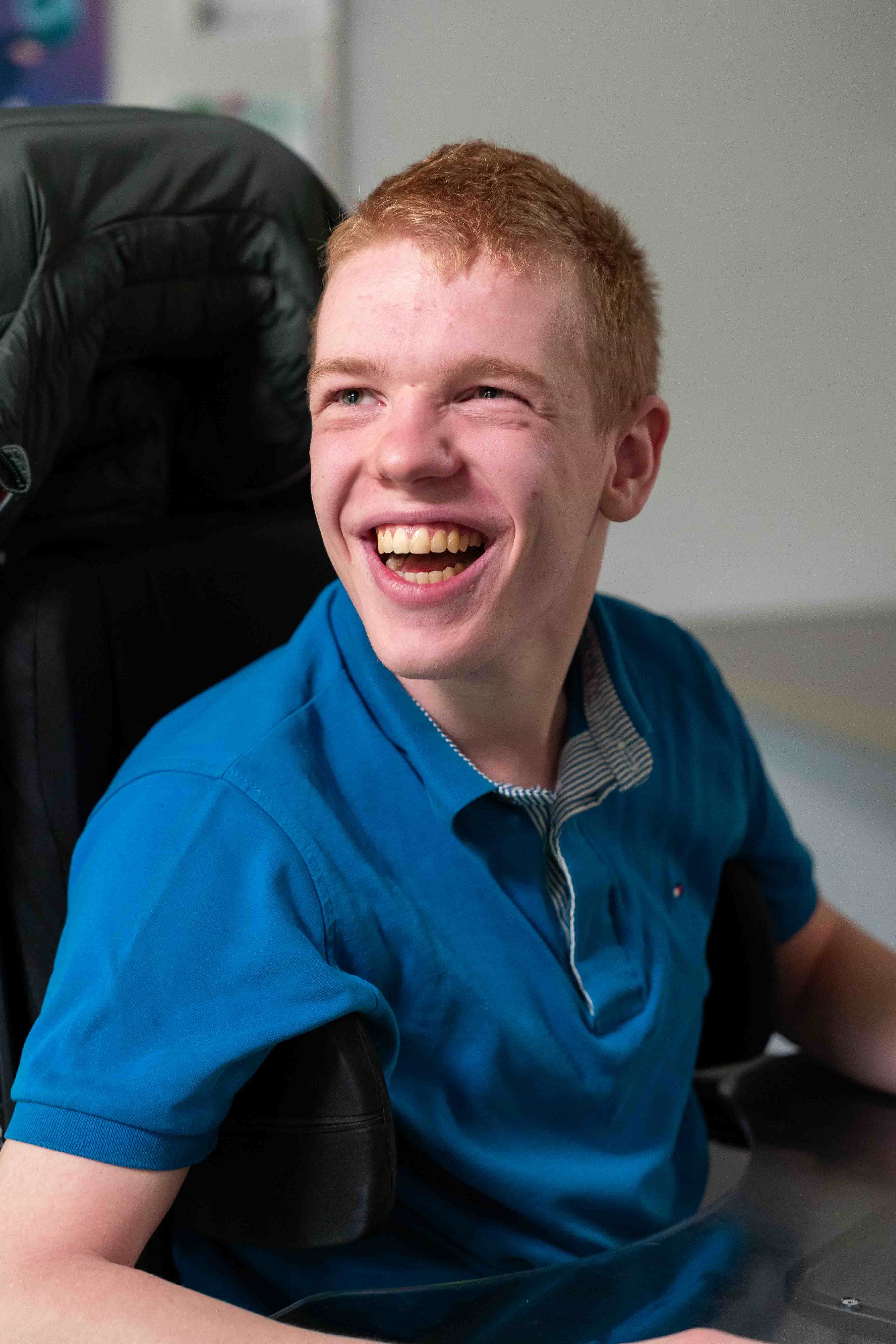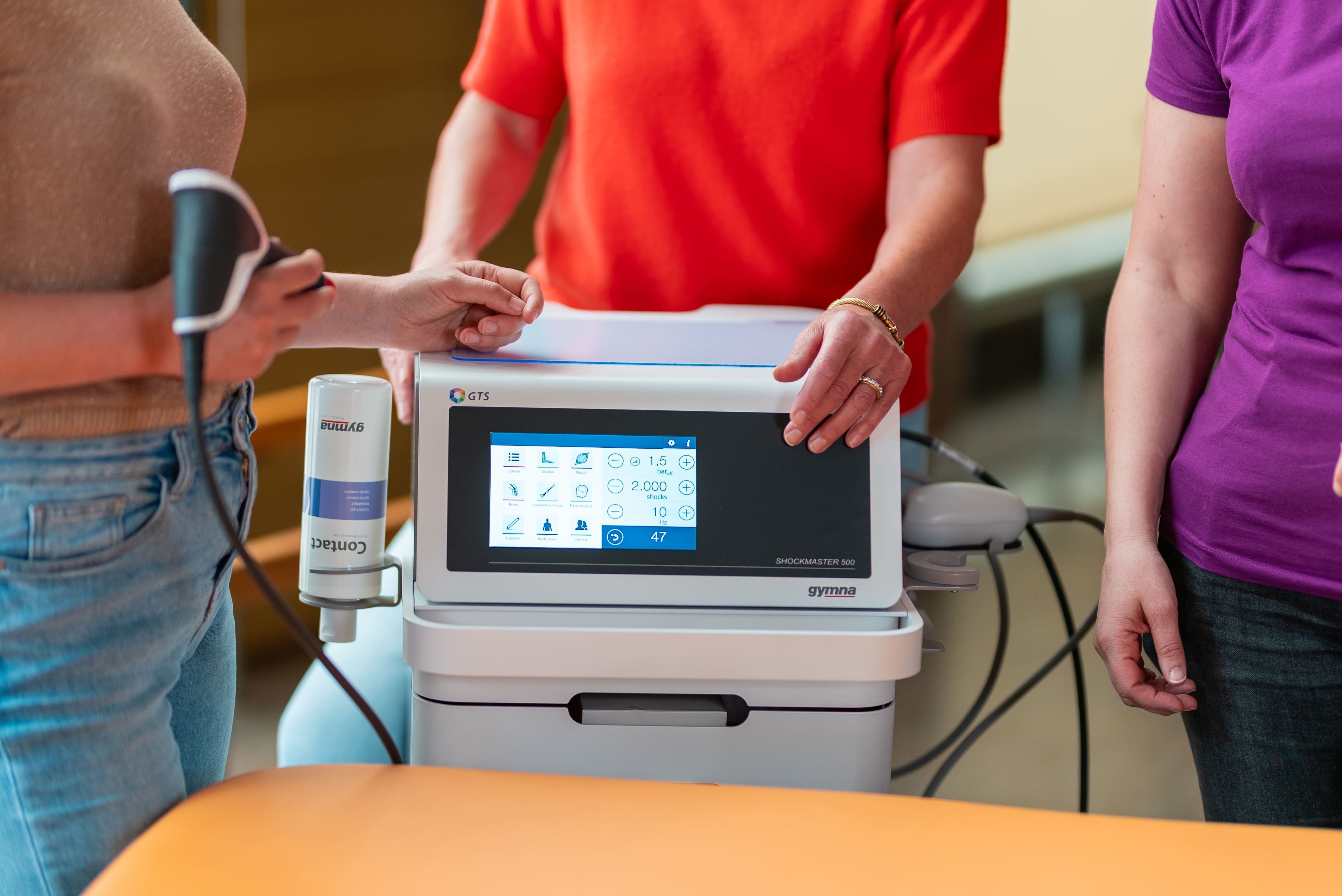Shockwave therapy in children with spasticity
New pilot study confirms: safe, feasible and effective

Shockwave therapy has been used for some time now in adults with spasticity, but little is known about shockwave therapy for children with spasticity. This is a missed opportunity, because radial shockwave therapy may significantly improve the quality of life of children and young people with spasticity. That is until Gymna took the initiative and investigated the impact of shockwave therapy on children with spasticity. Below you can read about the research, the experiences of the various parties involved and, of course, the results of this pilot study into shockwave therapy for paediatric spasticity.
Research into shockwave therapy in children with spasticity: importance and motivation
This pioneering pilot study that's the topic of this blog, was already mentioned in the blog 'Shockwave therapy as a treatment for spasticity in children'. The study was conducted between October 2024 and May 2025 on 21 children aged 6-18 years at Sint-Gerardus in Belgium, a school and care institution for children with (neuro)motor disabilities.
Behind the scenes at Gymna International
Lise Op de Beeck, clinical manager at Gymna and the driving force behind the research needed for the study, explains why this particular study was conducted: "Shockwave therapy can be used for so much more than just sports injuries, for example in neurology. However, little research has been done so far on shockwave therapy as a treatment option for children with cerebral palsy. In the pilot study we conducted, we wanted to find out how effective this radial shockwave treatment is for paediatric spasticity: Can children tolerate it? Can therapists work with it? Are there any unknown side effects? Can it be used safely?"

Wim Smeets, product manager at Gymna, emphasizes that Gymna products continuously evolve and keep up with the latest insights. Wim explains: "At Gymna, we are pioneers in incorporating state-of-the-art literature into our treatment suggestions and in translating research into our equipment. To make our treatments even more targeted, we choose to conduct this research with our own equipment, as we did for the study with the Gymna ShockMaster 300, so that therapists can use it responsibly. Today, few physiotherapists work with shockwave as a treatment for spasticity."
Discover what the Gymna ShockMaster can do for you
A story of hope and expectations
Such a promising project naturally raises hopes and expectations among all parties involved. Gymna’s own Lise Op de Beeck is clear about what she hopes this pilot study will set in motion : "If I dare to dream big, I hope that this pilot study will be the start of a larger study. We hope that the more drastic interventions often needed for patients with spasticity can be postponed. And an even bigger hope is that radial shockwave therapy for children with spasticity may even be integrated into the general guidelines in the longer term."
"I hope that radial shockwave therapy will eventually be integrated into the general guidelines for spasticity in children."
Gymna's Clinical Manager, Lise Op de Beeck.
The participants in the study also thought about what they would like to achieve. Daniël (13) hopes he’ll be able to pick things up more easily while Yavuz (18) hopes he’ll be able to walk better , and Britt (13) hopes to feel less tension. Niels and Lucas have even bigger hopes. Niels (18)’ hope is that shockwave therapy will make it possible to postpone or even eliminate the need for surgery, and Lucas (17) wishes that it will enable people with spasticity to move their limbs again. "But," he adds, "that is, of course, the dream of thousands of people in wheelchairs."

"That is, of course, the dream of thousands of people in wheelchairs."
Participant Lucas.
The mother of 18-year-old Lucas, who has spastic quadriplegia, would also like to share her personal hopes for her son: "The most important thing is that shockwave therapy makes Lucas pain-free and more flexible. Walking is a pipe dream, I know that. But self-reliance would be wonderful."
The research
The pilot study Gymna conducted into shockwave therapy for children with spasticity was approved in advance by the ethics committee of UZ/KU Leuven. All participants and their parents/carers were fully informed and gave their consent. The study was set up in a standardised manner and carried out under independent supervision by FRAME by Jessa and the UHasselt, ensuring the study was monitored correctly and objectively.
Gymna's study into shockwave therapy for children with spasticity was conducted under the supervision of UZ Leuven and in close collaboration with FRAME by Jessa and the Faculty of Rehabilitation Sciences at Hasselt University. FRAME is a department within the Jessa Hospital in Hasselt (Belgium) that functions as a clinical testing centre. They offer companies scientific guidance in the clinical validation of their new technological innovations for rehabilitation.
The aim of the study
The main objective of the study was to demonstrate the applicability of shock wave therapy. In addition, its safety and effectiveness were also examined.
Treatment and measurements
All 21 participants received four sessions of radial shockwave therapy, with one week between treatments. During each session, two muscle groups were treated with two series of 2000 shocks, performed with two different treatment heads. Regular therapy continued in parallel, so that the impact of shockwave therapy on children with spasticity could be properly assessed.
In order to measure the therapy’s effectiveness objectively, the evaluations were blindly conducted by therapists who did not perform the treatment themselves. Three validated outcome measures were used:
- Modified Ashworth Scale (MAS) – degree of spasticity
- Range of Motion (ROM) – degree of mobility
- Patient Specific Functional Scale (PSFS) – functioning in daily life
Experiences of those involved in the pilot study

Sint-Gerardus’ very own therapists Tamara Claes and Chris Lambrechts witnessed immediate improvements in the follow-up measurements during the treatment sessions. Ann Volders, policy manager for therapy at Sint-Gerardus, is also positive: "The therapy was well-tolerated and did not cause any undesirable side effects. In addition, it is easy to use in a c ." Lise adds: "In general, a shockwave session lasts about fifteen minutes, so it is easy to integrate it into the overall treatment."
"The session lasts about fifteen minutes and is therefore easy to integrate into the treatment." Gymna's Clinical Manager, Lise.
Read more about how Tamara and Chris' experience here
The participants' experience was also positive. Niels is happy to tell us how he experienced the study: "The shockwave treatment was a pleasant experience for me, it really helped a lot. I noticed a big difference in my movements." Yavuz is just as positive as Niels and says that his body now feels more relaxed than before. Daniël also agrees with the positive effects experienced by Niels and Yavuz: "It's great that I was able to undergo shockwave therapy. I am satisfied with the results. The therapy is not only good for me, but has also changed me as a person." In general, most participants experienced more relaxation and fewer night-time cramps. ADL activities, such as dressing and undressing, could be performed more easily with guidance.
"The therapy was not only good for me, but it has also changed me as a person." Participant Daniel.
The result: a positive trend in mobility and relaxation
The positive experiences of practitioners and participants as stated above are clearly reflected in the official assessment. For example, the acceptability of the therapy was rated 7/10 by the participants and 8/10 by the therapists. Both participants and therapists rated the user-friendliness 8/10. Shockwave therapy is deemed safe because there were no dropouts due to the therapy and no (new) side effects occurred (pain sensation and redness are known and accepted side effects). In terms of clinical performance, there was a positive trend in the MAS score (upper extremity and hamstrings) and an improvement was observed in more than 50% of functional activities (PSFS).
Shockwave therapy in children with spasticity was found to be well tolerated, safe and shows promising improvements in spasticity and functionality
Lise is pleased with the results: "The participants accepted the therapy well and more than half of them showed functional progress in ADLs such as dressing or eating. The therapy is safe and accessible and can therefore be used responsibly as a supplement to conventional therapy for children with cerebral palsy. Finally, we also saw a statistically significant decrease in spasticity in certain muscle groups, such as the biceps, wrist flexors and hamstrings." Research coordinator Sarah from FRAME is also satisfied: "I am positively surprised by the results. We found some statistically significant results, despite having a small and diverse intervention group." Participant Niels has one final comment he would like to make about the results: "I am very happy that I was able to participate in the study and that the results are good. If I could, I would have taken the device home with me."

"If I could, I would have taken the device home with me." Participant Niels.
Documentary "Onder Spanning" (Breaking the tension)
As you’ve read above, the pilot study definitely shows promising results for shockwave therapy in paediatric spasticity. Would you like to know more about the study? Are you curious about the impact of spasticity on the lives of the participants and their experience with shockwave treatment? Then be sure to watch the powerful – and above all inspiring – documentary released by Gymna about the pilot study with the Gymna ShockMaster. The concise four-part series 'Onder Spanning ' (introduction, expectations, measurements and results) follows various participants in the study at different points in time and paints a clear and moving picture of the research and its positive impact.
Gymna ShockMaster 300: quality with evidence-based treatment suggestions
We now know that shockwave therapy with the Gymna ShockMaster is safe, well accepted and scientifically substantiated, and that it shows a positive trend in clinical performance in children with spasticity. There is still some uncertainty about which treatment parameters are the most suitable for different muscle groups. Although a number of studies have already touched on this topic, more in-depth research is definitely needed.
Marjan Vanheusden, Clinical, Quality & Regulatory Affairs Manager at Gymna, finds the study very meaningful: "As a manufacturer, you are always working on your product with a general patient profile in mind, but this study really gave a face to the people who are being helped by our devices."
"The people who are being helped by our equipment were given a face through this study." Marjan Vanheusden, Clinical, Quality & Regulatory Affairs Manager at Gymna.
As part of their constant mission for innovative solutions and MDR compliance, Gymna's treatment programmes are regularly updated to reflect the latest insights from (international) studies and best practice. Product manager Wim explains that these programmes always consist of several steps in order to offer the most comprehensive treatment possible. Wim: "This means that issues such as trigger points are addressed, but also the muscle belly itself. In addition, you receive suggestions for each applicator head and the patient's starting position, and you get to see an indication of the treatment location and zone. This means that any therapist can work with shockwave therapy, even beginners ."
Discover the Gymna ShockMaster 300

Shockwave therapy: widely applicable, including in private practice
The positive results of the pilot study also have implications for treatments for patients with spasticity resulting from other conditions. Wim says: "When people think of spasticity, they think of severely disabled people, but the target group is much broader than that. Not only people with cerebral palsy, but also people with Parkinson's disease, stroke or traumatic brain injury can be treated with shockwave therapy." Lise adds: "This treatment can therefore not only be used in neurological rehabilitation centres, but is also very suitable for use in private practices. After all, that’s where patients with such neurological complaints always end up."
"Not only people with cerebral palsy, but also people with Parkinson's disease, stroke or traumatic brain injury can be treated with shockwave therapy." Gymna's ShockMaster Product Manager, Wim Smeets.
View the Gymna ShockMaster 300 here
Want to know more?
Has this blog inspired you and would you like to know more about the pilot study and shockwave therapy for spasticity in children? Then be sure to check out the four-part documentary series "Onder Spanning" (Breaking the tension). The blogs on our website also contain more interesting information about shockwave therapy. If you have any questions, please feel free to contact our team, who will do their utmost to answer your questions to your satisfaction and work with you to find suitable solutions for your practice.
